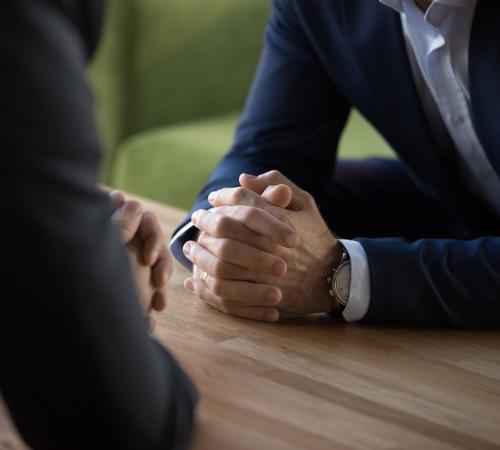

For business owners, it’s important to understand how to price a product, the different strategies involved, and how they’ll impact your bottom line. Here, we explore how to decide on the right selling price and how exactly to align these with your finances.
Market pricing does not calculate the final selling price against the cost of production. Rather, it uses competitor pricing and the product’s position within a market.
When pricing products against the value of competitors, businesses usually change their prices reactively to remain competitive. These companies are often referred to as ‘fast followers’ and base their prices on analytical research and data.
Such data might include competitor prices and the overall movement of value within a sector. The idea is to work out what the market is willing to pay.
Advantages of market pricing
Market pricing:
- Provides flexibility and the ability to stay reactive in competitive markets
- Bases decisions on reliable analytical research and data
- Uses data that is easy to collate, especially in a competitive market.
Disadvantages of market pricing
Market pricing:
- Uses observed analytical data rather than direct customer preferences
- Is objective, in contrast with the subjective behaviours of customers
- Targets the same demographics as competitors, even if this isn’t quite right for your niche – for instance, if you run a luxury retail business or salon.
Dynamic pricing
Dynamic pricing could be a good way to price a product that’s more in-demand, since it uses variable or flexible prices that react to how demand may shift.
Using this method, businesses change prices to reflect market demand, in a similar way to market pricing. Dynamic pricing also makes it possible to market and sell products to different demographics at different prices.
It’s a form of continuous price adjustment that fluctuates throughout the day or week, keeping profit margins and competitor pricing in mind. This method is usually associated with highly competitive industries where multiple factors can influence pricing quickly.
Dynamic pricing is considered a more reactive and rolling approach compared to market pricing.
Pricing experiments
When you set up a new business, it’s understandable if you’re unsure about selling prices.
To combat this uncertainty, you might:
Raise prices on bestsellers
Once you’ve established some general selling prices and pinpointed consumer interest, it may be worth considering raising the prices on some of your bestsellers.
Even if you have committed to a pricing strategy, consumer behaviour and sales data can influence profit-boosting decisions.
Consider seasonal discounts and promotions
When trying to calculate the selling price of a product, seasonal discounts and promotions are useful tools to amend prices – especially when you know how customers behaved in previous years. They also allow you to capitalise on peak-trading seasons.
You could experiment with offers to gauge the reception. If there’s a profitable take-up – for instance, if your fitness business sees profit margins increase when you slash your sign-up fee – you might even make the discounts permanent.
Psychological pricing
Psychological pricing is a method based on the theory that certain numbers can impact customer behaviour and decisions.
It can be a good way to familiarise yourself with your target demographics and learn what they are most receptive to.
Some popular examples of psychological pricing include:
Anchor pricing
Anchor pricing is a comparative method in which you place the cost of a discounted product next to the original price, or a more expensive product, to highlight the discount.
This more expensive product acts as the ‘anchor’, which customers refer to when making their decision.
Buy-one-get-one-free
The buy-one-get-one-free deal appeals to customers as a win-win situation and tends to grab attention more effectively than simple percentage discounts thanks to the attention-grabbing language.
Charm pricing
The charm pricing strategy uses odd numbers so customers perceive the overall cost to be lower. The most common examples are prices such as ‘£9.99’ in place of £10. It’s only 1p away, but customers could be ‘charmed’ by the figure.
Exclusivity
Introducing exclusivity to your selling prices could encourage customers to buy now.
If you reduce your prices and label this as a limited deal, this could capture consumer attention and convert this into sales. If your consultancy firm slashes rates just for January, the leads you’re nurturing might decide to take the plunge.
Other pricing strategies to consider
Discount pricing
Discount pricing is a way to calculate the appropriate selling price of a product that is perhaps underperforming. The idea is simple: you reduce prices based on how the sales figures look in a bid to sell more.
Customers are, naturally, more likely to buy products with a lower price tag, especially when these are combined with techniques such as anchor pricing.
Advantages of discount pricing
Discount pricing often:
- Helps to improve loyalty as customers feel they are getting the ‘best’ price
- Generates steady and reliable sales and cash flow
- Drives up the volume of products being sold
- Helps to compete within your market.
Disadvantages of discount pricing
Discount pricing also:
- Sees customers waiting for future discounts in some cases
- Risks igniting a price battle with your competitors, eventually devaluing your sector
- Decreases the perceived value of your product and business.
Loss-leader pricing
With the loss-leader pricing strategy you choose one or more products to price below the production cost. This may seem counterintuitive, but the purpose is to drive sales of other, more profitable, products.
The low prices generate traffic and a possible incentive for further purchases.
Advantages of loss-leader pricing
Loss-leader pricing:
- Could drive up customer engagement
- Sees more expensive goods compensating for the ‘loss’ in production profit – when products or services are chosen well.
Disadvantages of loss-leader pricing
Loss-leader pricing:
- May carry a risk of profit loss if there isn’t enough take-up for profitable products or services
- Could negatively affect brand perception.
Penetration pricing
Penetration pricing works by setting a product at a lower price at its initial release to entice customers.
The penetration price is lower than the intended final selling price, and is later increased. This method often works well when combined with exclusivity pricing techniques.
Advantages of penetration pricing
Penetration pricing:
- Increases immediate customer interest, ideal if your business is new
- Is an effective tool against competitors, especially if the product is exclusive
- Generates urgency and curiosity among customers.
Disadvantages of penetration pricing
Penetration pricing:
- May annoy or affront customers when you increase the price
- Could lead to price wars with competitors
- This method is most effective for goods you predict will be sold quickly.
Price skimming
Price skimming is effectively the opposite of penetration pricing. Initially, a product is sold at its highest intended price, and is gradually lowered over time.
These changes can be highlighted with effective anchor and discounting pricing strategies.
Advantages of price skimming
Price skimming:
- Reacts when customer interest in waning, or competition is emerging
- Could present a higher ROI, as the product is introduced at its highest intended price, and subsequent lower prices attract increased traffic
- Is often a great way to ‘test’ interest.
Disadvantages of price skimming
Price skimming:
- Is not so effective in a competitive market where initial prices should capture attention
- Can result in dissatisfaction among loyal customers
- Allows competitors to enter the market and introduce the same tactics.
How to price handmade items
When pricing handmade items (external link), you might set the final selling price against the cost of production, raw materials and your time.
Your first aim could be to cover and calculate the production cost. This formula is simple – it’s the price of materials plus your labour. You can calculate how much your labour is worth by setting yourself a general hourly wage.
Next, work out how much money you want to make per item sold. Don’t forget, this margin needs to:
- Pay wages
- Cover business running costs – including tax and National Insurance
- Facilitate the production of further products
- Leave you with profit.
How to price a service
The general method for pricing a service (external link) is similar to calculating the cost of a product, in that you need to consider materials, time, and desired profit margin. With services, however, it’s harder to calculate the selling price per unit, as there are no tangible units to price.
Instead, calculate how the value of your service is perceived. This can be done by:
- Calculating the general production cost – inclusive of hours, wages, and resources
- Observing competitor prices
- Analysing market data and research
- Performing consumer demographic analysis – this is where calculating the ‘perceived’ value can get subjective.
You might also price business services by:
Charging by the hour or day
An ‘objective’ way to nail down the cost of your services could be to charge clients for your time. This helps to identify exactly where time and resources are directed, meaning you can measure profits against production costs more easily.
Using a fixed rate
Rather than charging per hour or day, fixed-rate pricing means estimating the value of the project at hand. You then provide clients with a grand total before commencing work.
This, of course, comes with a risk of you losing money if you miscalculate.
Running a retainer
Think of a retainer as a contract – a lump sum of money paid regularly, which secures work on a continual basis.
You might make your retainer prices known before commencing work. These would be signed up to before work starts.
Calculating the selling price for your products and services is a key skill for entrepreneurs and other business owners. Be confident in what you’re selling and what your brand stands for, and you could use pricing to maximise profits.
Disclaimer:
At Hiscox, we want to help your small business thrive. Our blog has many articles you may find relevant and useful as your business grows. But these articles aren’t professional advice. So, to find out more on a subject we cover here, please seek professional assistance.






